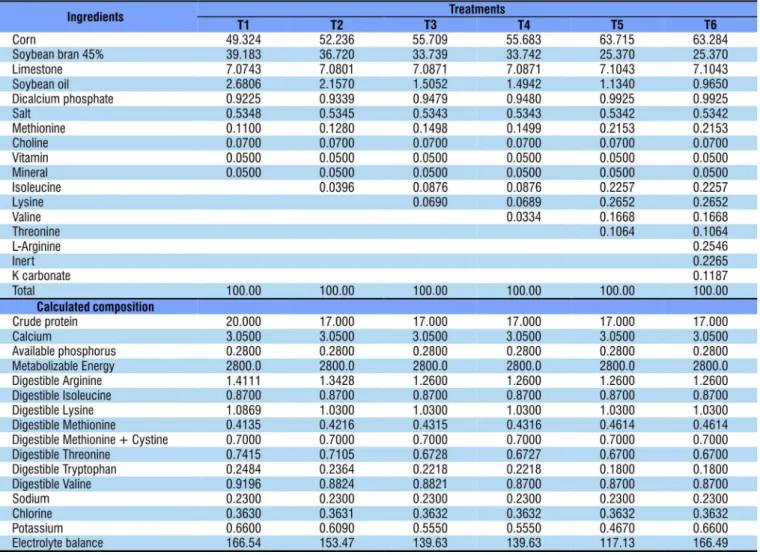Índice de conforto térmico, variáveis fisiológicas e desempenho de codornas alimentadas com redução proteica
Texto
Imagem


Documentos relacionados
The parameters studied were: feed intake, egg production per hen day, egg production per housed hen, commercial egg production, egg weight, egg mass, feed conversion per egg mass,
Treatment 4 (2% lysine + 0.025 % enzyme) significantly increased number of eggs, egg mass, egg production, body weight gain and daily feed intake (P<0.05).. EN: number of eggs;
Table 2 - Egg weight (EW), lay percentage (LP), egg mass (EM), feed intake (FI), feed conversion ratio per dozen eggs (FCR/dz), feed conversion ratio per kg egg (FCR/kg), and
Average feed conversion ratio values, expressed as kg feed per dozen eggs, of light layers were better (P<0.01) as compared to those of heavy layers (Table 7) during the
Performance parameters, such as feed intake, feed conversion ratio (kg feed/ kg egg and kg feed/dozen eggs) w ere different (p<0.05) w hen analyzed as a function of
Improved egg weight and feed conversion per egg mass were seen when the protein level of the diet was increased, whereas feed intake, laying rate, feed conversion per dozen eggs,
Feed consumption (FC), egg production (Production), egg mass (EM), egg weight (EW), feed conversion by dozen (FCDz) and by egg mass (FCEM) of laying hens fed with ration
There was no effect (p > 0.05) on weight gain, feed intake and feed conversion per mass and per dozen eggs caused by the replacement of 25% soybean meal with canola meal